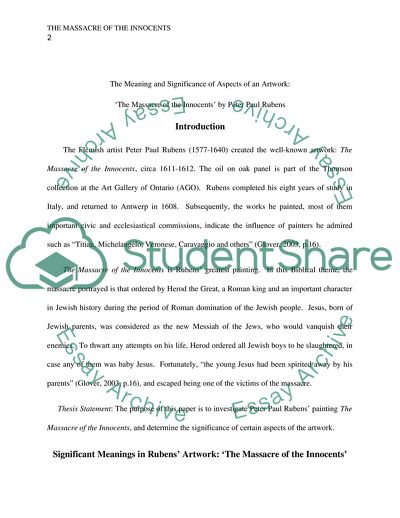Cite this document
(The Massacre of the Innocents by Peter Paul Rubens Case Study Example | Topics and Well Written Essays - 1250 words, n.d.)
The Massacre of the Innocents by Peter Paul Rubens Case Study Example | Topics and Well Written Essays - 1250 words. https://studentshare.org/visual-arts-film-studies/1785952-the-massacre-of-the-innocents
The Massacre of the Innocents by Peter Paul Rubens Case Study Example | Topics and Well Written Essays - 1250 words. https://studentshare.org/visual-arts-film-studies/1785952-the-massacre-of-the-innocents
(The Massacre of the Innocents by Peter Paul Rubens Case Study Example | Topics and Well Written Essays - 1250 Words)
The Massacre of the Innocents by Peter Paul Rubens Case Study Example | Topics and Well Written Essays - 1250 Words. https://studentshare.org/visual-arts-film-studies/1785952-the-massacre-of-the-innocents.
The Massacre of the Innocents by Peter Paul Rubens Case Study Example | Topics and Well Written Essays - 1250 Words. https://studentshare.org/visual-arts-film-studies/1785952-the-massacre-of-the-innocents.
“The Massacre of the Innocents by Peter Paul Rubens Case Study Example | Topics and Well Written Essays - 1250 Words”. https://studentshare.org/visual-arts-film-studies/1785952-the-massacre-of-the-innocents.


